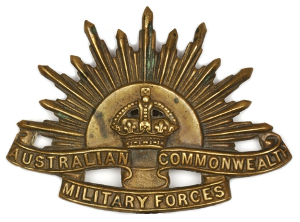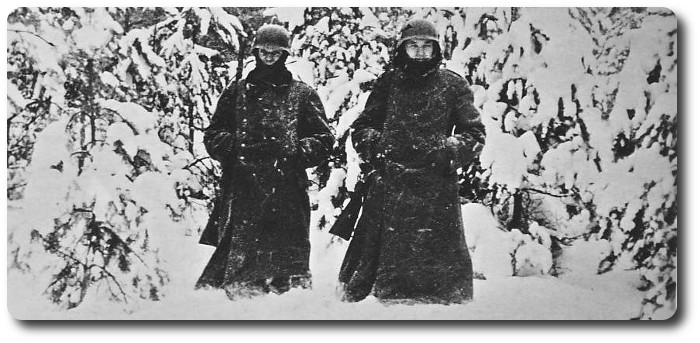Topic: Discipline

Execution by Musketry (US Army, 1944)
Not more than four nor less than one will be loaded with blank ammunition.
Procedure for Military Executions, [US] War Department Pamphlet No. 27-4, 18 June 1944
Officer Charged with Execution
The officer charged with the execution will command the escortand make the necessary arrangements for the conduct of the execution. He will—
a. Instruct the escort and the execution party in their duties.
b. Arrange for the receipt of the prisoner by the prisoner guard.
c. Arrange for an execution party of twelve men and one sergeant.
d. Arrange for a chaplain to accompany the prisoner.
e. Arrange for the presence of a medical officer at the scene of the execution.
f . Cause a post with proper rings placed therein for securing the prisoner in an upright position to be erected at the place of execution.
g. Cause twelve rifles to be loaded in his presence. Not more than four nor less than one will be loaded with blank ammunition. He will place the rifles at random in the rack provided for that purpose.
h. Provide a black hood to cover the head of the prisoner.
i. Provide a 4-inch, round, white target.
j. Cause the prisoner's arms to be secured behind his back, before or immediately after his receipt by the prisoner guard.
k. Arrange for an ambulance or other conveyance with sufficient personnel to be in attendance upon the execution to receive and care for the body. In the event a contract undertaker is used bv the quartermaster, his services may be substituted. See AR 30-1820.
Assembly of Escort
a. The band will be formed in accordance with section V, FM 28-5, will proceed to the exterior door of the place of imprisonment at which the prisoner is to be received by the prisoner guard, and halt near the door, facing in the direction of the scene of the execution. The presence of the band is optional at executions where the presence of troops is not required.
b. The prisoner guard will consist of twelve men armed with rifles, under the command of a sergeant armed with a pistol. The prisoner guard will form in double ranks and at the proper time will proceed to the place of imprisonment to receive the prisoner.
c. The main guard will consist of one or more platoons and will form in the rear of the band.
d. The execution party will be formed unarmed and proceed to a previously prepared rack of rifles, secure arms, and move to the scene of the execution, halting 15 paces from and facing the position to be taken by the prisoner. At close interval, and at order arms, the party will await the arrival of the prisoner and escort.
e. At the designated time the prisoner, with his arms bound securely behind his back, accompanied by the chaplain, will be received by the prisoner guard and placed between the ranks. The escort will then proceed toward the scene of the execution, the band playing the "Dead March."
f. The escort will approach the scene of the execution on line with the open side of the rectangle formed by the witnessing troops. The band will move past the point at which the prisoner is to be placed, and will take position on the opposite side of the rectangle, facing the scene of the execution. The prisoner guard, prisoner, and chaplain will proceed directly to the prisoner's post, halt, and face the execution party. The main guard will proceed to a point 5 paces behind the execution party and form a line facing the scene of execution.
Execution
a. The officer charged with the execution will take position in front of the execution party and face the prisoner. He will then read the charge, finding, sentence, and orders aloud to the prisoner. He will then notify the prisoner and the chaplain that a brief time will be allowed the prisoner for any last statement. After a reasonable time, he will order the sergeant of the execution party to secure the prisoner to the post and to place the hood over his head. Then the medical officer will place the target over the prisoner's heart. The prlsoner prepared, the officer charged with the execution will order the prisoner guard to join the main guard; the chaplain and medical officer will retire to the flank taken by the band. The oficer charged with the execution will take position 5 paces to the right of and 5 paces to the front of the execution party.
b. Commands for the execution may be given by a combination of manual and oral signals as prescribed.
(1) When the officer charged with the execution raises the right arm vertically overhead, palm forward, fingers extended and joined, the execution party will come to the "Ready" position as prescribed for firing a volley, and will unlock rifles.
(2) When the officer charged with the execution lowers his arm to a horizontal position in front of his body, the execution party will take the position of "Aim."
(3) When the officer charged with the execution drops his arm directly to his side and orally commands: FIRE, the execution party will fire simultaneously.
(4) The officer charged with the execution will then bring the execution party to "Order Arms."
c. When the use of manual signals is not practical, the following oral commands are prescribed:
(1) At the command READY, the execution party will take that position and unlock rifles.
(2) At the command AIM, the execution party will take that position with rifles aimed at target on the prisoner's body.
(3) At the command FIRE, the execution party will fire simultaneously.
d. The officer charged with the execution will join the medical officer who will examine the prisoner and, if necessary, direct that the "coup de grace" be administered. Should the medical officer so decide, the sergeant of the execution party will administer the "coup de grace," with a hand weapon, holding the muzzle just above the ear and one foot from the skull.
e. Under exceptional circumstances, the officer charged with the execution, with the permission of the commanding officer, may detail an extra file of six men to administer the "coup de grace." This file will form the rear rank of the execution party, and if it is necessary to administer the "coup de grace," will move in front of the execution party and fire, at the command of the officer charged with the execution.
f . Upon pronouncement of the death of the prisoner by the medical officer, the execution party will proceed to the racks from which the rifles were originally obtained, and replace the rifles in the racks at random. The execution party will then be dismissed.
g. The escort, with the band playing a lively air, will return to their parade ground and be dismissed.
h. The witnessing troops will parade in column in front of the body and proceed to their respective parade grounds where they will be dismissed.
i. The officer charged with the execution will direct the burial party in the disposal of the body as prescribed by AR 2 10-500 and 30-1820.



 Militia General Orders
Militia General Orders

 In a letter to Mrs. Everard Digby, of Neutral Bay, a captain who is serving as a medical man in France gives a graphic description of the Somme battle. The letter is dated July 7. The captain writes:—
In a letter to Mrs. Everard Digby, of Neutral Bay, a captain who is serving as a medical man in France gives a graphic description of the Somme battle. The letter is dated July 7. The captain writes:—








 Every soldier who is found guilty of desertion, fraudulent enlistment, or any offence under section 17 or 18 of The Army Act, and every soldier who is sentenced to penal servitude, or to be discharge with ignominy, shall forfeit all medals and decorations (other than the Victoria Cross, which is dealt with under special regulations) of which he may be in possession, or to which he may be entitled.
Every soldier who is found guilty of desertion, fraudulent enlistment, or any offence under section 17 or 18 of The Army Act, and every soldier who is sentenced to penal servitude, or to be discharge with ignominy, shall forfeit all medals and decorations (other than the Victoria Cross, which is dealt with under special regulations) of which he may be in possession, or to which he may be entitled.
 I take the earliest opportunity to express to the officers of the general and personal staff and to the regimental officers and men of the various Corps assembled at Montreal on the 24th May, my extreme approbation of their soldierlike appearance, their steadiness under arms and the discipline so manifest throughout. They did full credit to the loyal celebration of her majesty's birthday and the honor of being permitted to pass in review before the Representative of Our Most Gracious Sovereign the Queen.
I take the earliest opportunity to express to the officers of the general and personal staff and to the regimental officers and men of the various Corps assembled at Montreal on the 24th May, my extreme approbation of their soldierlike appearance, their steadiness under arms and the discipline so manifest throughout. They did full credit to the loyal celebration of her majesty's birthday and the honor of being permitted to pass in review before the Representative of Our Most Gracious Sovereign the Queen.


